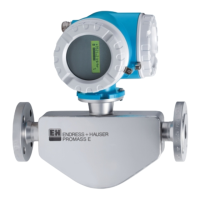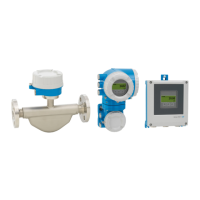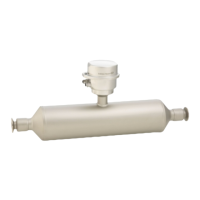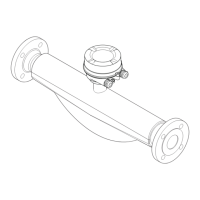5 Operation Promass 40
26 Endress+Hauser
5.3 Display of error messages
Type of error
Errors that occur during commissioning or measuring are displayed immediately. If two
or more system or process errors occur, the error with the highest priority is the one
shown on the display. The measuring system distinguishes between two types of error:
• System error: this group includes all device errors, for example communication errors,
hardware errors, etc.
→ see Page 36
• Process error: this group includes all application errors, for example empty pipe, etc.
→ see Page 39
Fig. 16: Error messages on the display (example)
1 Error type: P = process error, S = system error
2 Error message type:
= fault message, ! = information message (definition: see below)
3 Error designation: e.g. FLUID INHOM. = fluid is not homogeneous
4 Error number: e.g. # 702
5 Duration of most recent error occurrence (in hours, minutes and seconds)
Error message type
Users have the option of weighting system and process errors differently, by defining
them as “Fault messages” or “Notice messages”. You can define messages in this
way with the aid of the function matrix (see the “Description of Device Functions” man-
ual).
Serious system errors, e.g. module defects, are always identified and classified as “fault
messages” by the measuring device.
Notice message (!)
• Displayed as → Exclamation mark (!), error type (S: system error, P: process error).
• The error in question has no effect on the inputs or outputs of the measuring device.
Fault message (
)
• Displayed as → Lightning flash (
), error type (S: system error, P: process error).
• The error in question has a direct effect on the inputs or outputs.
The response of the inputs or outputs (failsafe mode) can be defined by means of
functions in the function matrix (see Page 42).
Note:
For security reasons, error messages should be output via the status output.
F06-x0xxxxxx-07-xx-xx-xx-000

